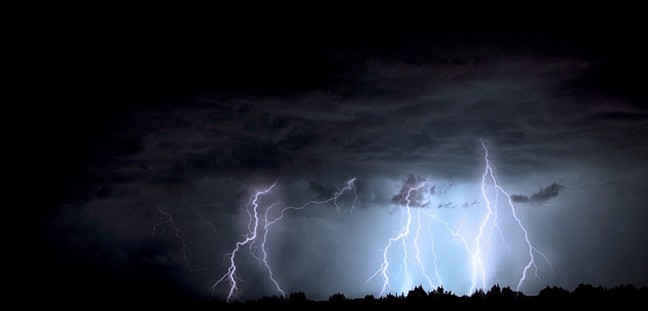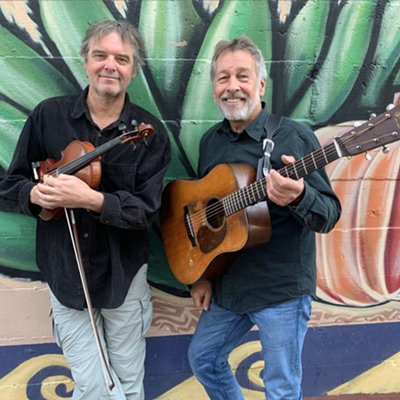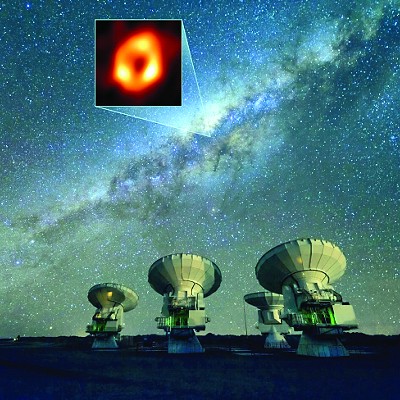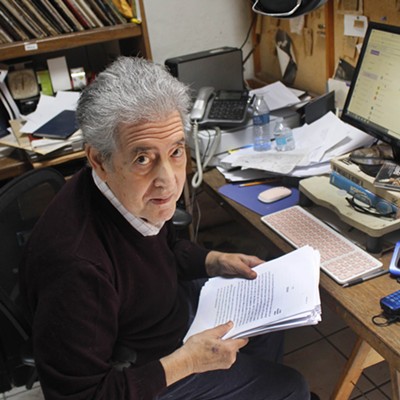Words like mammatus, pyrocumulonimbus and nimbostratus may seem archaic, or even alien, to some. But to the attendees of Tucson's first MonsoonCon last weekend at the Arizona Sonora Desert Museum, they are everyday concepts.
This gathering of storm chasers, lightning photographers, meteorologists and anyone else fascinated by what happens to the Southwest in late summer was in Tucson for the first time this year, although it's been held in the Phoenix area since 2014, when it was known as AZ ChaserCon.
Tucson photographers Justin Northcraft, Liz Kemp and Lauren Bailey took the reins when the original event coordinators moved away from Phoenix.
"I was really sad to see that it wouldn't continue, so they essentially handed us the baton," said Bailey, who's attended MonsoonCon for the past two years. "It's my personal opinion that Tucson is monsoon-central, and the Desert Museum is an ideal location, so it all fit together perfectly."
This year's theme was "Train, Equip, Connect," and focused on safety in storm chasing, as well as bringing the resources of the community together. The event's speakers were storm photographers Greg McCown, John Sirlin and Jeremy Perez, as well as meteorologists Emily Carpenter and John Henz.
The event presentations ranged from the artistic to the technical. These two elements often overlapped, such as in McCown's presentation, where he shared his vivid storm photography, but also specific camera settings to capture the best lightning shots.
McCown is a Tucson photographer and owner of Saguaro Pictures, known for his photo of a lightning bolt striking between a saguaro and a rainbow. His keynote presentation, titled "Getting Lucky," focused on the often unpredictable nature of trying to capture lightning and monsoon photos.
"Storms are one of the hardest things to shoot," McCown said. "They're unpredictable, and every storm shot requires a bit of luck... What you don't see, and what I don't post, is all the garbage shots I get in-between the good ones."
McCown started his photography career in 2004, and like many attendees, slowly became more enraptured with storms throughout the years. He tried and failed and tried again, not capturing a photo of lightning until 2009.
"I remember dancing in the rain the first time I got a lightning shot," McCown said. "I remember it like it was my first kiss."
McCown also explained how much patience and persistence storm photography takes—such as when he stayed out late being pelted by the rain, trying to capture a great monsoon photo. He eventually retreated home to sleep, only to be awoken by thunder shortly after. He ran outside and continued photographing until dawn.
"I probably only got like an hour of sleep that night," McCown said. "It was awesome."
Emily Carpenter, a meteorologist from the National Weather Service, discussed severe weather safety and the anatomy of the monsoon. She explained how anyone can enroll in online "Skywarn Spotter Training" to spot and report dangerous weather.
She also cleared up information from the National Weather Service, such as how a "severe weather watch" is for when dangerous weather is possible and residents should prepare, versus a "severe weather warning" which is when dangerous weather is imminent and residents should take action.
"We do all this in the name of protection of life and property," Carpenter said.
Carpenter named a brief section of her presentation "Cloud Etymology 101," describing words like pyrocumulonimbus, storm structures, cloud anvils and explaining why lenticularis were her favorite types of clouds. She is a self-described weather nerd.
Finally, Carpenter offered some predictions for this year's monsoon. The ongoing El Niño pattern and a mild spring suggest a delay in the onset of the monsoon. El Niño conditions also mean warmer ocean temperatures could boost rainfall when it does come, with heavier rains predicted in September.
"The official outlook from the Climate Prediction Center indicates better chances for below normal precipitation to start the monsoon, then equal chances for the later part of the monsoon," Carpenter said. "We have a good outlook for the monsoon based on our data."
Carpenter also indicated pressure for the monsoon should start building as soon as next week, to which the crowd cheered.
Outside of the lecture series, MonsoonCon 2019 also hosted a small gallery of local storm photography: massive storm fronts in the sunset, lightning illuminating mountain ridges by night, and the classic saguaro silhouetted before a wall of orange cloud.
In another first for MonsoonCon, the event sold out. Whereas last year's event in Phoenix saw 85 attendees, Tucson's first MonsoonCon reached 140.
"I'm so glad we were able to keep the spirit of MonsoonCon alive, and what better place to do so," Bailey said. "I mean, if you live in Tucson, I don't know how you aren't a weather enthusiast." ■














